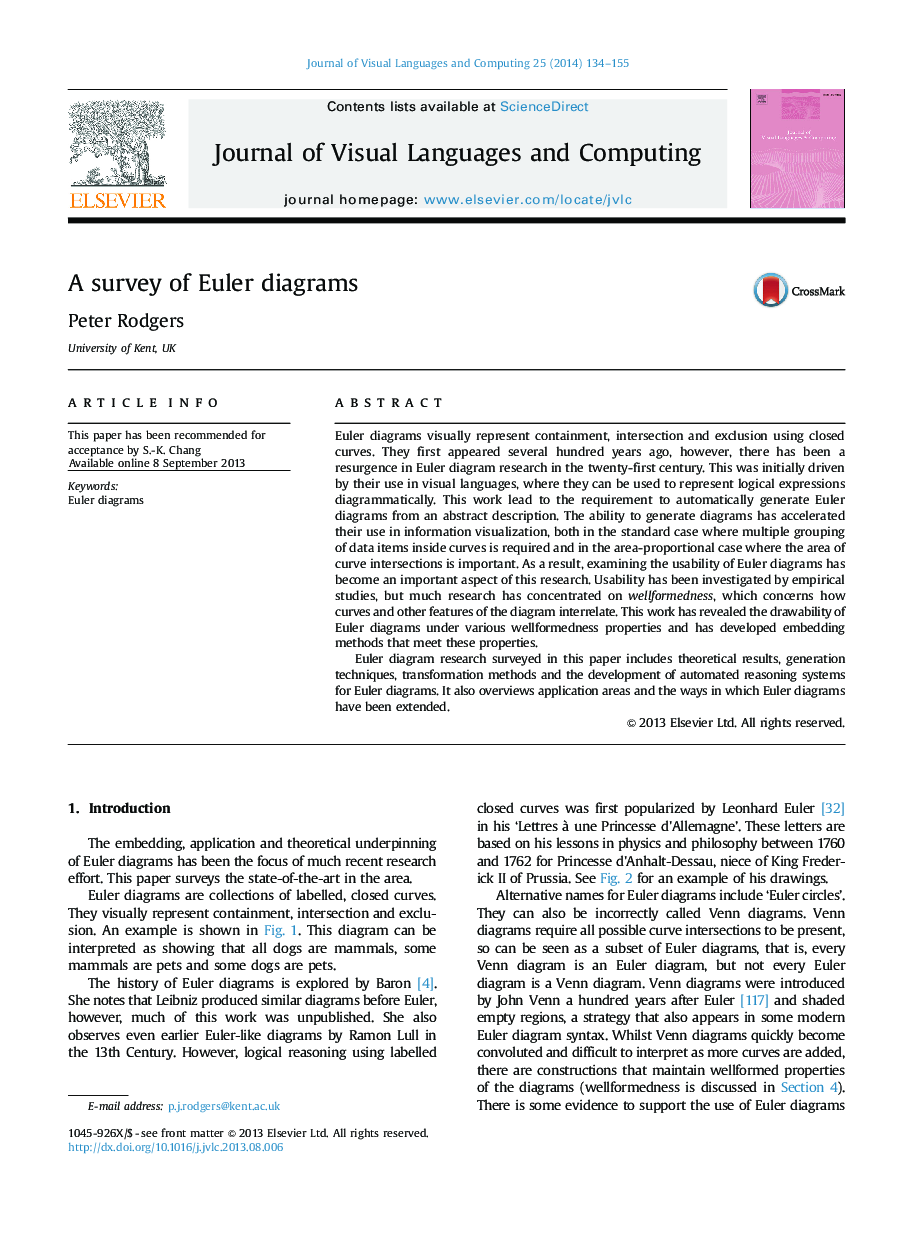| Article ID | Journal | Published Year | Pages | File Type |
|---|---|---|---|---|
| 523618 | Journal of Visual Languages & Computing | 2014 | 22 Pages |
Euler diagrams visually represent containment, intersection and exclusion using closed curves. They first appeared several hundred years ago, however, there has been a resurgence in Euler diagram research in the twenty-first century. This was initially driven by their use in visual languages, where they can be used to represent logical expressions diagrammatically. This work lead to the requirement to automatically generate Euler diagrams from an abstract description. The ability to generate diagrams has accelerated their use in information visualization, both in the standard case where multiple grouping of data items inside curves is required and in the area-proportional case where the area of curve intersections is important. As a result, examining the usability of Euler diagrams has become an important aspect of this research. Usability has been investigated by empirical studies, but much research has concentrated on wellformedness, which concerns how curves and other features of the diagram interrelate. This work has revealed the drawability of Euler diagrams under various wellformedness properties and has developed embedding methods that meet these properties.Euler diagram research surveyed in this paper includes theoretical results, generation techniques, transformation methods and the development of automated reasoning systems for Euler diagrams. It also overviews application areas and the ways in which Euler diagrams have been extended.
